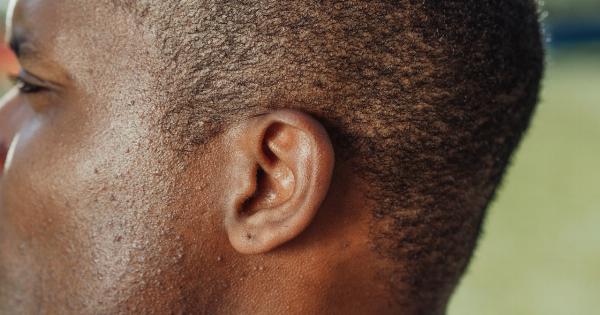Your ears are not just a means for hearing, they can also provide important clues about your overall health. By paying attention to the condition and appearance of your ears, you may be able to detect potential health issues early on.
From infections to underlying health conditions, here are some signs to look out for:.
1. Earwax
Earwax, also known as cerumen, is a natural substance that helps protect your ears from dust, dirt, and bacteria. However, the presence and color of earwax can indicate different things about your health. Generally, earwax is a sign of a healthy ear.
It should be soft and a pale yellow or light brown color. If the earwax is dry, dark, or excessive, it may indicate a blockage or infection.
2. Ear pain
Ear pain can be a symptom of various health conditions. It is commonly associated with ear infections, which can occur in the outer, middle, or inner ear.
Middle ear infections, known as otitis media, are more common in children, while outer ear infections, known as otitis externa or swimmer’s ear, are often caused by water remaining in the ear after swimming. If you experience persistent or severe ear pain, it is important to consult a healthcare professional for proper diagnosis and treatment.
3. Hearing loss
Hearing loss can be caused by a variety of factors, including age, exposure to loud noise, ear infections, and certain medical conditions. If you notice a gradual or sudden change in your hearing ability, it is recommended to get a hearing test done.
Hearing loss can affect your quality of life and may also be a warning sign of other health issues such as high blood pressure, diabetes, or cardiovascular disease.
4. Tinnitus
Tinnitus is the perception of sound, such as ringing or buzzing, in the absence of any external noise. It can occur in one or both ears and can be temporary or chronic.
While tinnitus itself is not a disease, it can be a symptom of an underlying condition, such as age-related hearing loss, exposure to loud noise, earwax buildup, or certain medications. If you experience persistent tinnitus, it is important to consult a healthcare professional for further evaluation.
5. Itchy or irritated ears
If your ears feel itchy, irritated, or inflamed, it may be a sign of various skin conditions such as eczema, psoriasis, or dermatitis. These conditions can affect the skin of the outer ear, ear canal, or even the skin around the ears.
It is important to avoid scratching the ears as it can lead to further irritation or infection. Seeking medical advice from a dermatologist can help determine the underlying cause and provide appropriate treatment.
6. Swelling or redness
Swelling and redness of the ears can occur due to various reasons, including allergies, insect bites, sunburn, or infections. In some cases, it can be a sign of an allergic reaction or a skin infection.
If the swelling and redness are accompanied by pain, warmth, or discharge, it is advisable to seek medical attention as it may indicate an infection that requires treatment with antibiotics.
7. Eustachian tube dysfunction
The Eustachian tubes connect the middle ear to the back of the throat and help equalize air pressure, drain fluid, and maintain proper functioning of the ears.
Dysfunction of the Eustachian tubes can cause symptoms such as ear pressure, muffled hearing, and ear pain. It can be caused by allergies, sinus infections, or changes in air pressure. If you experience persistent Eustachian tube dysfunction, it is important to consult an ear, nose, and throat specialist for proper evaluation and treatment.
8. Abnormal growths or lumps
Any abnormal growth or lump around the ears should be evaluated by a healthcare professional. While most lumps or growths are benign, such as cysts or skin tags, there is a possibility of more serious conditions, including skin cancer.
Early detection and treatment can significantly improve the outcome, so it is important not to ignore any suspicious growths or lumps.
9. Referred pain
Referred pain is a phenomenon where pain in one area of the body is felt in another area. Sometimes, pain in the ears can be the result of a condition affecting other nearby structures, such as the teeth, jaw, or throat.
For example, a dental infection or temporomandibular joint disorder (TMJ) can cause referred pain to the ears. If you experience ear pain without any apparent cause, it is important to consider other possible sources of the pain and consult the appropriate healthcare professional.
10. Excessive or unusual earwax odor
While earwax itself may not have a strong odor, an unusual or foul smell emanating from the ears could indicate an infection. Ear infections can sometimes cause discharge, which can have a distinct odor.
If you notice an unpleasant smell coming from your ears or any discharge, it is recommended to seek medical advice to determine the underlying cause and receive appropriate treatment.






























